Why Did the World Sleep Through India’s Female Genocide?
By Rita Banerji
It’s a question that needs to be asked: How did the world sleep through this? In less than a century, more than 50 million women have been targeted simply for being female and wiped out from India. Millions have been killed before birth. Millions killed as infants. Millions killed as little girls. Thousands killed as new brides. Thousands killed as they are forced through repeated, back-to-back, unsafe abortions to get rid of girls. Thousands more killed for so-called “honor” or branded as “witches” and mob lynched. And many burnt alive as widows on the pyres of their husbands. Killed at every stage of life — simply for being female!There is no other human group in history that has been persecuted and annihilated on this scale. So, how did the world close its eyes to this?
I don’t ask this question lightly, for I have asked it of myself first. How could I, a woman born and raised in India, have remained blind to this all my life? It’s a question that caused me tremendous angst and put me through a year long process of soul-searching, and eventually culminated in my founding The 50 Million Missing in December 2006 – a global campaign to end the genocide.
One of the incidents that my deliberation uncovered remains like a thorn in my soul, and I recount it here with much shame. It is an incident from my college days in the United States, and involves the Nobel Laureate, Dr. Amartya Sen, who had first used the term “missing” for the women who had been eliminated from India’s population. This is where the ‘Missing’ in my campaign’s title comes from. In 1986, Dr. Sen first raised the alarm on what his study revealed to be an abnormally high skewing of the normal, biological gender ratio in the populations of India and China. At that time he estimated that 37 million women who should have been a part of the populace of India, could not be accounted for. Despite that forewarning, the number of “missing” or eliminated females has continued to rise at an alarming rate.
About four years after Dr. Sen’s news-breaking revelation, I had an opportunity to hear him speak. He was scheduled to give a seminar at a University in the Boston area, and my anthropology professor in the college I was attending, was keen to take our class to hear him speak. She urged us all to register, but since the seminar was on a Saturday, and most students (including me!) were not keen on giving up a holiday, she got a lukewarm response. She was disappointed but then had a brain-wave. She said, that after the seminar, we’d spend some time sightseeing Boston by night, and have dinner in China-town, before we drove back to the campus. She got a full class attendance!
This however, is not the worst part of my story! What I feel most embarrassed about, is that no matter how much I rack my memory, I cannot recall a word of what was said at Dr. Sen’s seminar. I was attending a women’s college then, which has strong liberal and feminist leanings. There are other such women’s colleges in the vicinity, some of whose students must have attended. Surely, someone must have raised the question of the ‘missing’ women? Not only do I have no recollections of that, but I am ashamed to say that I have a perfectly clear memory of what I had for dinner in China-town later that evening. It was Peking duck with plum sauce and mu-shu pan cakes.
It is the understated implications of this incident that have haunted me. I keep thinking of possible parallels. What if I was, say for example, a black African person studying in the U.S. and had the chance to meet someone who had just published a book on the horrendous scale of violence inflicted on black people under apartheid in South Africa. Would I drag my feet on the chance to hear this person speak? Would I need to be given an ulterior incentive to do so? Would I later, draw a complete blank on what this person said or what was discussed at his talk? How would I have responded?
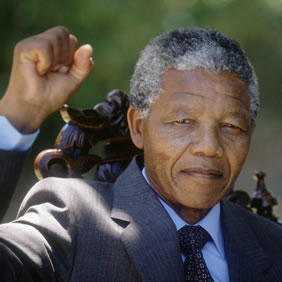 The ultimate irony of this story is that during this very time period, I was actually, actively involved in the student movement against South Africa’s apartheid government. Even before I had left India, at the age of 16, I had been hugely inspired by Nelson Mandela and had written an anti-apartheid poem that The Statesman newspaper in India had published. Soon after, I got my first passport and when I saw the stamp of the travel ban to South Africa on it, I had rejoiced that my government was not going to stand up for fascism. In college in the U.S., I eagerly attended talks by high-profile anti-apartheid leaders. I can still feel in my bones that highly charged energy and anger in the auditorium during a talk by Mark Mathabane. I spent weekends travelling overnight to attend public rallies in Washington D.C. and did not give a second thought to giving my time, energy, and concern to all other forms of anti-apartheid activism, including distributing flyers, and boycotting goods and companies sustaining the apartheid government.
The ultimate irony of this story is that during this very time period, I was actually, actively involved in the student movement against South Africa’s apartheid government. Even before I had left India, at the age of 16, I had been hugely inspired by Nelson Mandela and had written an anti-apartheid poem that The Statesman newspaper in India had published. Soon after, I got my first passport and when I saw the stamp of the travel ban to South Africa on it, I had rejoiced that my government was not going to stand up for fascism. In college in the U.S., I eagerly attended talks by high-profile anti-apartheid leaders. I can still feel in my bones that highly charged energy and anger in the auditorium during a talk by Mark Mathabane. I spent weekends travelling overnight to attend public rallies in Washington D.C. and did not give a second thought to giving my time, energy, and concern to all other forms of anti-apartheid activism, including distributing flyers, and boycotting goods and companies sustaining the apartheid government.
It is therefore painful, and bewildering, that I remained nonresponsive to the issue of the persecution – the systematic, mass-scale annihilation – of Indian women. Women like me!! And so, I had to first ask myself, before I could ask the world: How could I, of all people, have slept though this genocide?
How could I have slept though the annihilation of my own kind? How did I, an Indian woman, live on in such oblivion to the systematic and targeted elimination of millions of Indian women? Why did it evoke no response in me – no anxiety, no outrage, no resistance, no action? Not even involved thought! There is something so indescribable and bizarre about asking that question. I wonder if others belonging to groups that were targets of genocides have done the same?
 In 2004-5, after I had returned to India, and was working on the research for my book Sex and Power, something clicked deep within me. The data on the systemic and mass-scale violence on Indian women and girls I was gathering for my book was playing out in its stark grotesqueness in my everyday reality. A baby girl is abandoned on the streets in my city, and as residents wait for the police to respond, street dogs kill her and start eating her.
In 2004-5, after I had returned to India, and was working on the research for my book Sex and Power, something clicked deep within me. The data on the systemic and mass-scale violence on Indian women and girls I was gathering for my book was playing out in its stark grotesqueness in my everyday reality. A baby girl is abandoned on the streets in my city, and as residents wait for the police to respond, street dogs kill her and start eating her.
A mother throws her new born girl out of the window of a city hospital a few hours after giving birth. The police rescue the child unharmed from the tree she was caught in, and hand her back to the parents. Our domestic help comes in late one morning and informs us that the daughter-in-law in the house next to hers had run out onto the street, fire blazing all over her. She died, and everyone knows she was set on fire though no complaint was filed. The daughter of a close family friend dies within seven years of her marriage under mysterious circumstances. Her parents who had invited us for her wedding, don’t even inform us of her death. They cremate her quietly, and have the doctor write it off as a heart attack. She was only 30.
I saw the connection and for the first time felt uneasy, ashamed and outraged. Yet, I was also conscious that I had grown up in India, regularly hearing about incidents like these. Why didn’t they strike me this way before? Now, after much retrospection I finally understand why.
One, I think to many of us in India the immense scale of the violence and its character was unknown. We’ve dealt with it like families often deal with incestuous abuse. Everyone has or knows a dirty secret and learns to hush it down, till it becomes the dirty secret that an entire nation is participating in, while pretending that no one knows. I think the collation of data by researchers, social activists, and institutions over the last two decades have been very critical to exposing this dirty secret.
Secondly, I think that the manner in which this issue has been addressed, has completely dehumanized what is in reality a massive human-rights violation of a specific group of people. The ‘missing’ women and girls are referred to as numbers and ratios such that after some time one is not even aware that we are talking about human beings here and a gross infliction of violence against them. More so, there is an attempt to dismiss the role of the perpetrators – be it in the form of the legal system, culture and individuals, such that the way the world has come to view this is as they would news of an earthquake, or hurricane — something that just happens and cannot be controlled. So girls and women in India simply go “missing,” – not that a system comprised of individuals are deciding to and systematically targeting and massacring them.
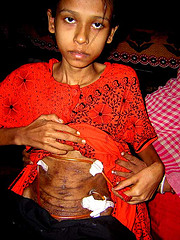 A third and very important factor I now realize is the cultural internalization of the dehumanization of women. Yes, I did grow up like everyone else in India hearing about baby girls being trashed and married women being burnt to death – but there is a deep-rooted, cultural conditioning that taught us very early on to disregard these events, to remain unmoved, like we would if we heard news about the weather. If a cow was slaughtered in a Hindu neighborhood, there would be religious riots and reprisals across the country. So very early, those of us who grew up in India – learnt to prioritize the value of different types of lives. The life of a cow was more sacred than the life of a girl or a woman.
A third and very important factor I now realize is the cultural internalization of the dehumanization of women. Yes, I did grow up like everyone else in India hearing about baby girls being trashed and married women being burnt to death – but there is a deep-rooted, cultural conditioning that taught us very early on to disregard these events, to remain unmoved, like we would if we heard news about the weather. If a cow was slaughtered in a Hindu neighborhood, there would be religious riots and reprisals across the country. So very early, those of us who grew up in India – learnt to prioritize the value of different types of lives. The life of a cow was more sacred than the life of a girl or a woman.
What is personal to me, and probably an important factor in changing my culturally conditioned perspectives was my stay in the United States. In 1995, Susan Smith, a young, single, struggling mother in the U.S., had killed her two children, drowning them by pushing her car into a lake. The country responded with shock, outrage and an outpouring of grief. In another incident, Laci Peterson, a young pregnant woman was killed by her husband, in what turned out to be a coldly, premeditated murder for personal gain, as most dowry murders in India are. Again, the public responded with shock, outrage and grief. In both cases it was unacceptable that someone in the life of the children and the young wife, who is trusted with their safety and well-being, would deliberately violate their very basic human rights with such cold, premeditation. When I finally returned to India, the total absence of public response to incidents of brutal violence against girls and women rankled deeply in me. It felt outlandishly abnormal.
 Yet over the last 6 years or so as I have worked with The 50 Million Missing Campaign to raise global awareness about the ongoing female genocide in India, I find myself looking back at the women’s and human rights groups in the United States, with equal puzzlement. Their response to the female genocide in India is often patronizing – almost accommodating. ‘Educate the people,’ it is suggested, ‘and they will stop killing females some day.’ This, regardless of the fact, there is no correlation between education, economics and a tendency to eliminate daughters or kill women in India. I wonder, would the same suggestion be made about the killing of blacks in the U.S. or Jews in Europe? And while we are waiting for this misogynistic mindset to change, what do we do about the continued killing of girls and women every few minutes?
Yet over the last 6 years or so as I have worked with The 50 Million Missing Campaign to raise global awareness about the ongoing female genocide in India, I find myself looking back at the women’s and human rights groups in the United States, with equal puzzlement. Their response to the female genocide in India is often patronizing – almost accommodating. ‘Educate the people,’ it is suggested, ‘and they will stop killing females some day.’ This, regardless of the fact, there is no correlation between education, economics and a tendency to eliminate daughters or kill women in India. I wonder, would the same suggestion be made about the killing of blacks in the U.S. or Jews in Europe? And while we are waiting for this misogynistic mindset to change, what do we do about the continued killing of girls and women every few minutes?
I had once asked an American friend, a feminist, what she thought the response of the women’s and human rights groups in the U.S. would have been, if 50 million women had been selectively annihilated there – killed in the millions before and after birth, as girls and as women. She said, “They would have brought down the Capitol with their bare hands!” So I wondered why they would respond differently to the genocide of women in India. Perhaps it is as author Taslima Nasreen observes in her book, No Country For Women. She says that communities tend to view women as the property of the communities they are born and raised in. When the human rights of women in one community are abused, the other community politely looks away. They think: It is “their” women. Let them deal with “their” women the way they see fit. Just as they would, with all matters of personal property.
ABOUT THE AUTHOR
Rita Banerji is an author and gender activist, and the founder of The 50 Million Missing Campaign to end India’s female genocide. Her book ‘Sex and Power: Defining History Shaping Societies,‘ is a historical and social look at how the relationship between gender and power in India has led to the ongoing female gendercide. Her website is www.ritabanerji.com She blogs at Rebellions in my Space and tweets at @Rita_Banerji
ABOUT THE PHOTOGRAPHER : Ornella Bagnato is one of the 2400 photographers from around the world who support The 50 Million Missing Campaign’s photo pool on flickr. To see more of his works click here.
[Note: This article was first published in two parts on the ‘It’s a Girl!’ movie blog]








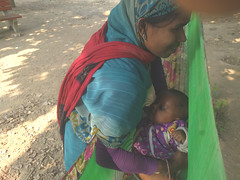



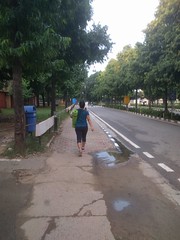



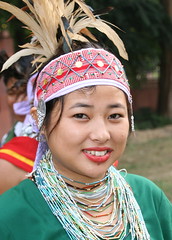
this remind me of the stories the people who lived in the German village closest to the Dachau concentration camp. they all claimed that they had no idea what Hitler was doing right down the road from them but everyone knows that they must have seen strange things related to the camp. additionally some of the men of the village worked at the camp. the point is its so easy for people to say “I’m not a Jew, or a Bosnian, or a Syrian, or woman this isn’t my problem.” Never again” will never happen as long as that remains the world’s attitude.
Absolutely! The attitude of “this isn’t my problem” is the problem!
Hi Rita,
Good luck with your important work. As I was reading this post, it struck me that I have never thought of the plight of women in India as a “human rights” issue. Perhaps, that’s because we are used to cataloging any difficulties suffered by women in the “feminist issues” category. Thank you very much for setting the record straight. This has nothing to do with feminism and everything to do with the plight of individual women and their human right to life.
hi Leah — thank you for your message. Indeed, that is one of the goals of The 50 Million Missing Campaign — to emphasize that the mass extermination of any group and this level of violence is unprecedented and if the criterion for it was race or religion, the world would have been up in arms. It does impact on women, and so it is important that the Feminist movement in India and outside should have taken a lead on this. Just as the Civil rights movement was about human rights, and black leaders took the lead on the fight, which was supported by black and white people. But unfortunately the feminist movement has not led the way on this way they should have. To understand why see these two articles http://www.causes.com/causes/74219-the-50-million-missing-a-campaign-against-india-s-female-genocide/actions/1693071
Hi Rita,
It takes a while to understand that ‘their problem’ is ‘our problem’. Where you’re talking about the misogynistic mindset, I can completely resonate with that. I am from Pakistan, and where you have millions of women exterminated in the name of honour, property and dowry mergers!
Again, to cut it short, it has got nothing to do with religion. Because there is no faith which does not teach equality. It has to do with the cultural phenomena, where men thinks they rule and know all.
The only way out, is a collective step forward, away from cultural inappropriations, not just through education but through a strong sense of giving awareness about morality. Identify the consciences, before one can ever ask others to change. To change is to be aware!
My thoughts!
Peace out!
I am uneducated about this matter and outraged to hear if it. I do feel however that if the US were to intervene to try and tell a country to quit killing its own females it would be useless. If India can’t stop it how can the US? people criticize the US for the places they are currently stationed but then want them to intervein in so main instances. It seems like a lose lose. I hope a solution is found however and hopefully it is by the people of India. You seem to do amazing work. Please continue to bring such to light. We do live in a bubble unaware of others plight.
thank you Monica! i couldn’t agree with you more this is NOT a job for NATO! i wish it was that simple but this is not Libya. i do blame the UN (especially UNICEF and the ICC) for its total silence on this issue but nothing NATO can do will help. I think for a lot of people its easier to just blame the USA and NATO for every problem in the world than actually solve anything
Hi Rita,
It is very obvious that people are unaware of what is happening in India. It is shocking and I will try to get as many people as possible to sign the petition. i do not know if it will help.
Just to inform you I live in South Africa and grew up during the apartheid era, I am a white woman aged 45. I did not agree with apartheid but feel that I must ask when last you have had a look at what is going on here in SA.
White farmers, their wives and children are tortured and murdered very brutally and the very people that was against apartheid now turns a blind eye!!
According to genocide watch there are 8 stages and they have declared SA is at stage 6.
Our black president and ANC youth leaders sing kill the farmer kill the boer one bullet one boer, this is broadcast on tv and that is exactly what they are doing.
There are currently 1.3 million white people living in squatter camps because the goverment make sure that white people don’t get jobs.
The police and army are all ex Apla and Inkonto isizwe (terrorists) in the apartheid area so no help is forthcoming from them either. We are so outnumbered so we are all sitting and waiting for a full blown genocide to take place where they will wipe out the entire Afrikaans nation.
go to the Censorbugbear.co.za website and you will see what is happening and just as we are not being helped, I doubt whether you will receive a lot of help either.
I will pray for the woman and children of India as I am praying for my fellow country men.
Hi Ursula, I sorry it took me so long to respond to your comment. I couldn’t locate it from the website so I had to find it through the comment que in the administrative site. But yes, I am somewhat aware of what you are mentioning here. I know the rates of rape and violence on women are out of control. And its both white women and poor black women. I didn’t know about the reverse ‘concentration’ camps you mention here. I did fight against apartheid, and I’m glad it went. But the system that replaced it seems to have just inversed it. Partly I feel that many people had been waiting for justice and there needed to be proper war crimes trials like the ones of the Nazis instead of what was done with the Truth and Reconciliation. There is a historical unresolved anger that’s pouring out and likely on the wrong people! But I think there is also a massive failure on the part of the anti-apartheid leaders who took the reigns of the new South Africa. There are issues of cultural misogyny as a part of how masculinity is defined in the African culture that is often coddled the way it is by Indian feminists in India too. And it’s what sustains the violence. But what you describe happening in Africa is absolutely wrong and I condemn it in the same way I did the violence of apartheid.
It is interesting to note that India holds both sides of the coin. A large number of the Indian population worships The Goddess principle- that which is feminine is considered divine. I am not familiar with the details of the female genocide in India, however, i wonder if there is a link between the genocide and religious affiliation? Having said that, i have found that disrespect for women is prevalent, even among goddess worshipers. Some of them worship the Goddess as abstract or transcendental, but not as one who lives in the flesh.
The violence against women by The World’s Patriarchy is devastating. In India and China it takes more overt forms. But, the demons of misogyny exist all over the world. Indeed, the complacency of the women, in face of the violence against their kind, is devastating! I look at the women of the world and i say to myself- where is the sisterhood?
Why have the women of the world compromised their sisters? We are all in the same boat: white, black, brown,red,yellow- the women of every race. I urge all women to wake up and help their sisters, in whatever capacity they have.
Gloria Eagle
Reblogged this on iheariseeilearn.